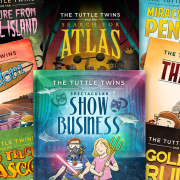The 10th Venice International Film Festival began August 30, 1942. One of the films entered was from famed Italian director, Goffredo Alessandrini; and he hired Italy’s top studio, Scalera Films, to produce it. Alessandrini’s goal was to film a drama of epic proportions. For his ambitious project, Alessandrini chose the perfect vehicle to adapt to the screen, wartime Italy’s best selling novel, We The Living by Ayn Rand. To guarantee its success, three of Italy’s top box office stars were hired, and it subsequently became a smash hit among Italian audiences, the Italian Gone With The Wind if you will.
The Irrepressible Human Spirit
This romantic drama was the story of a strong, independent woman facing the challenges of life in a spiritless and ruthless Bolshevik Russia. According to Rand, the novel is not about Soviet Russia in particular, but about the sanctity of human life, and a woman’s spirit that could not be crushed by the State. Mussolini’s fascist government eventually banned the film after two months, and ordered all copies to be delivered to government authorities for destruction. The success of the novel in fascist Italy, and its film version (which Rand did not know about, let alone authorize) were the first of many monumental achievements for Ayn Rand. Her body of work, briefly described below, make Rand an obvious choice for Poetic Justice Warrior.
We The Living, published in 1936, was Rand’s opening salvo for her sense of life in the world of fiction. As an émigré from Soviet Russia in 1926, she could speak with authority about the life-sapping totalitarianism that held her country hostage. So it makes sense that she was shocked to find acceptance of Soviet style oppression among American intellectuals and politicians. In fact, finding a publisher for We The Living was a struggle, they were worried that no one would believe the violence and despair that Rand described in her novel.
The Individualist Ideal
Rand’s next project, The Fountainhead, was published in 1943, and it was about the struggle between individualism and collectivism in Man’s soul. Like the heroine Kira in We The Living, Rand created a new heroic character to illustrate a life of purpose and pride. In this case, it was the architect Howard Roark, and his character became Rand’s prototype of how life could and should be lived.
For contrast, Rand created antagonists that are all too common in everyday life. One is the conformist Peter Keating who asked “Can’t you ever do things without reason, like everyone else?” But worst of all was the spirit-crushing Ellsworth Toohey whose mission was “If you kill a man’s sense of personal value, he’ll submit.” Roark refused to submit. A non-fictional version of Toohey is the American progressive democrat John Dewey, who believed “There is no obvious social motive for the acquirement of mere learning, there is no clear social gain in success thereat.”
Another important philosophical theme from The Fountainhead is the Law of Identity, meaning everything has its own unique properties, they behave only according to their nature. Existence exists, or as Roark explains, “No two materials are alike. No two buildings have the same purpose. Every form has its own meaning. Every man creates his meaning and form and goal.”
The Fountainhead became a best-selling novel, and 1949 it was also produced as a film with A list actors, this time by a Hollywood studio. The intellectuals remained unimpressed, and Rand was frustrated that none of them understood her achievement. When a friend suggested that she explain her philosophy in non-fiction, she replied no, everything is in the novel, I will go on strike.
The Motor of the World
Rand’s next novel was Atlas Shrugged. Published in 1957, it was originally titled The Strike. It is loaded with heroic characters and true to life antagonists. Critics complain that the characters are one dimensional, and the heroes millionaire industrialists, but this reveals a lack of understanding. Ostensibly, many of the strikers were also managers and skilled tradesmen. Atlas is their story too. They were hired because of their integrity and skill, and were well compensated and appreciated. They went on strike because they refused to lend sanction to the heavy handed authoritarians who exploit their value, loot their employers, and produce nothing,
Like the previous two novels, it’s a love story, and it’s about the struggle between the individual and the collective. But its also a thriller – the desperate search for society’s destroyer, the strike organizer who demonstrated what happens when people of the mind retire to happy valley. The scope is so rich and deep that we’ll focus on one element, the economics of Atlas Shrugged.
Rand’s economics are almost identical to those of Jean-Baptiste Say, our first Poetic Justice Warrior. Say discovered that in a market economy, capital is the mind of its owner. As Rand explains, “Wealth is the product of man’s capacity to think.” Both Say and Rand taught us that it’s the producers that matter; they create markets, they create consumers, they create wealth. And not just wealth, they explained the root of money itself. Say poured the foundation of all other economic theory, Rand uncovered the fountainhead of human flourishing.
Ayn Rand’s achievement is an original and integrated system of philosophy called Objectivism. Its precepts include the laws of identity and causality, reason and free will. Its basis is rational egoism, or the moral pursuit of one’s self-interest. Each person’s life is its own standard of morality. As Rand explains, nothing can prevent an individual from acting on their judgement except other people, and only this makes the case for morally defensible government.
I Choose To Live
As poetic justice would have it, Atlas set records for book sales in 2008 and 2009 because of the government induced banking crisis that was prophesized in its pages – what had been a fictional novel 50 years earlier. And in another sublime example of poetic justice, the original movie negative of We The Living was saved. The Scalera studio chief put another film into its container to be destroyed by Italian authorities in 1942. The original was subsequently discovered in 1968, and it was in marvelous condition.
The film survived because one person chose life for We The Living, as its heroine Kira chose to live. Instead of submitting to an existence of despair in Russia, she chose to risk murder for the hope of flourishing in Finland. Kira was shot in the back and killed by a Russian soldier. Her alternative was to never know freedom; a choice no different than what a loving parent would do to save her child.
Rand, through her fictional character Kira, had solved an enduring philosophical problem. Kira’s highest value was her life, and she chose to live as humans are meant to live. With her capacity for reason, Kira perceived reality and what she ought to do. Here Rand bridged the philosophical gap between what is, and what people ought to do – the gap between facts and values. Perhaps Rand’s greatest philosophical achievement was to prove that reason can be applied to values. She proved that values are not purely subjective, much like she proved that the human mind cannot be separated from the body. They are an integrated system.
For Ayn Rand, facts, logic and values guide principles, and principles guide action for human flourishing. This includes healthy emotional responses such as goodwill and benevolence. These are the same emotions that Rand credits for Western civilization’s celebration of life we know as the Christmas season, and that define Poetic Justice Warriors. Please click to learn more.













